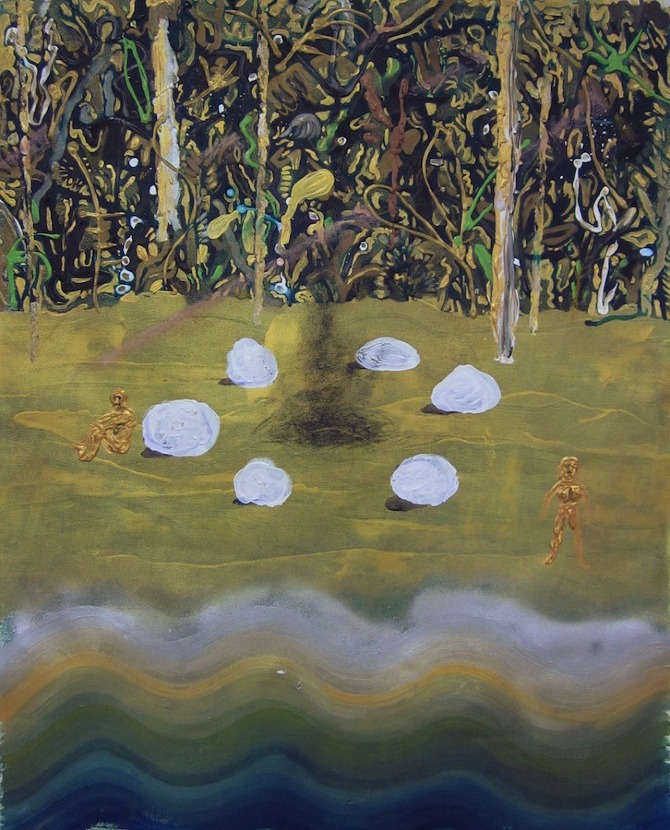
Where are we going? Can I drive? Some Thoughts on Pluralism

I read two blog posts recently written by Richard Beck (1, 2) in which he reviews and summarizes a book that sounds extremely interesting. It is a book entitled The Depth of the Riches: A Trinitarian Theology of Religious Ends by S. Mark Heim that deals with the issue of Religious Pluralism. I can say that I will mostly likely be looking into this book because this particular topic is really important to me.
I’ve lived a long time with an exclusive soteriological vision, so I know all about the “My God is better than your God” way of thinking. Thankfully I’ve matured a bit and out grown that phase of my life. In addition, I have since learned to read texts like the bible in a whole new way–A way that provides for unlimited, continued revelation of truth as process, a way in which the text no longer functions as a fixed, lifeless, static encyclopedic resource providing easy answers, but a true living word that requires my active participation and discernment. Perhaps most importantly, I have personally experienced a God who loves without limits. You may even say I have come to know a God who is reckless with her love. Therefore, as you can probably imagine, it is impossible for me to hold to an exclusive soteriological vision any longer.
However I am (and have always been) skeptical of a pluralistic view as well. In all honesty a true “we’re all the same so let’s hold hands and sing” pluralistic view seems to be really disingenuous and, as Beck points out, “tends to abstract out the rich and thick theology of each faith.” This is where I think Heim’s articulation of the Religious End is very helpful.
A religious end or aim is defined by a set of practices, images, stories, and concepts which has three characteristics. First, the set provides material for a thorough pattern of life. The ultimate often spoken in the definitions of religion is here given a quite concrete meaning. The religious end and the path that leads to it do not address only a limited dimension of life or one particular human need among others. They are ultimate in providing a framework that encompasses all the features of life, practice and sublime, current and future.
Given the existence of people who dedicate their entire lives to the impassioned study and learning (not to mention living) of a particular faith/philosophy/worldview, I find it hard to understand how someone outside of a particular tradition could claim to absolutely understand it or engage in a generalized critique of that faith. I would agree with Marshal McLuhan here and say that “we critique far too soon. We must first seek understanding.”
I believe that if we do take the time to observe other faiths with a thoughtful eye we will find that, although they may all cross paths and even travel a lot of the same roads, they eventually may be headed to different places–that is to say, different ends with different ideas, promises or conceptions of human fulfillment or bliss. This is absolutely not to say that one is necessarily better then the other, just that they are distinctly different. In his post, Beck uses the example of Buddhism and Christianity.
In short, Buddhism and Christianity are two distinct religious ends. Buddhism isn’t going to produce Christian salvation. And Christianity isn’t going to produce the Buddhist nirvana. As Heim notes, “There is no way to the Buddhist end but the Buddhist way.” And the same goes for the other world religions or life philosophies.
So recognizing the unique beauty and distinctiveness of each faith tradition is important and smart. By doing so we recognize wondrous diversity in which we live and honor the multivalent nature of truth.
My main take away from Beck’s review of the book was that if we go about thinking of religious pluralism with this concept of Religious Ends in mind, it takes a lot of the pressure off of someone to prove the falsity of the other faith. Instead one is invited into a conversation about what their faith actually offers the world. Heim on this point:
[W]e shift from dealing solely with flat issues of truth and falsehood to facing alternatives. We ask not “Which religion alone is true?” but “What end is most ultimate, even if many are real?” and “Which life will I hope to realize?”
Essentially, you could say we are all aloud to get where we’re going. Along the way of course we should ask what the Jesus Way has to offer humanity? What does Buddhism offer humanity? Can I claim that Jesus is the ultimate vision of human fulfillment? That other religions aren’t bad but that they are just lacking an essential missing piece? A piece only found in Jesus. Beck and Heim would say sure we could (and it could go the other way around). The best part of this creative, trans-formative, conversation for me, is that it is a perfect example of relational power.
In the end I’m left with this question: Do I think this technique could be used in other divisive areas in our lives such as when we are forced to explore political and cultural differences? The answer is, Absolutely! Do I think it is the only way? Certainly not, but I think it may be the best way.
Painting above by Drew Beckmeyer
[...] This post was mentioned on Twitter by . said: [...]